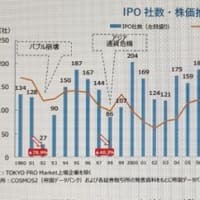Charles R.Geisst, A Guide to the Financial Markets, St.Martin's Press:1982
equity is a term synoymous with stock or share
liability clolumn will show two distinct categories- shahreholders' equity and debt
shareholder : an owner of the company
by selling shares it is able to expand its capital base while at the same time spreading out riskdoing business
this is advantage of going public
the original owners of the firm initially liable for the risks of the business
equity investors as owners are entitled to participate in the company's profit, in the form of dividends and may also participate in certain activities of the company such as voting for members of the board of directors
shareholder's ultimate risk ....is the amount he or she paid for the number of shares owned
the intrinsic nature of shares one assume , althogh only in general, the fortunes of a particular company will be fully and quickly reflected in the share price
shreholders are not responsible for a compny's mangerial decisions ...nor are they responsible for the company's debt
their newly acquired risk is actually a market risk
the capitalisation 時価総額 株価×発行株式数
debtor has lent the company money inretuern for interest payment
creditors ...are only entitled to receive interest and the principal of their loan back upon redemption
in the event of company declared bankruptcy, creditors must be reimbursed first since equity insubordinated to debt for legal purposes
equity is subordinated to debt it is by its nature a miore risky investment than bonds
1株当たり利益 earnings per share, or eps. its succinctly states the measure of a company's performance
earnings divided by the number of outstanding shares
by which are compared to each other is called the price/earnings ratio or pes
pes are extremely important when compared to each other
this is derived by simply dividing the current market price ofthe stock by the eps
average pes was 10
an individual pes is only 6
in market terms the shares ars undervalued in relation to the group
high dividend....such as public utilities in the US
tend to pay out less notably in high technology areas
dividen cover:the number of times earnings per share covered dividends per share(eaps/dps)
debt/equity ratio average ratioin the US is about 50 per cent , or 1:1 it is about the same in Britain
in other coutries can be much higher due to the fact that banks play more central central role in providing funds to corporations tha do equity shareholders
methods of increasing the numbers of shares outstanding
bonds with warrants capital gains
stock issue(UK terms) or stock dividend(US terms) offers new stock as dividend
rights issue
stock split
occasionary do purchase shares in order to reduce the amount in the hands of the general public
treasuy stock
divided yield: dividing teh dividend per share by the current market price of the stock
this is also sometimes referred to as the pe multiple
succinct:brief and clear
ordinary shares (British parlance), common stock(US parlance)
preference shares(British) , preferred stock(US)
they may be convertible into ordinary shares of the company an dmay be cumulative. this means that if a dividend omitted
purchase of secutities :going long : long position
selling securities : short selling 空売り
later pruchased at a lower price this is called short covering (buy to cover)
arbitarge 裁定:市場間の価格差の利用
margin trading
その金利はプライム金利より低い
その金利が上がるとmargin shake outと呼ばれる現象が起きる
貨幣供給の増加 インフレ 企業利潤の増加 株価の上昇
貨幣供給の増加 インフレ 金利の上昇 債券価格の低下
1979 USの株式取引の8割をNYSE 1割をAMEX
specialist in US(jobber in Britain) one inidividual both functions
different from tha market maker
insititutional trading essential difference is the size
increasing instituitionalisationof share investing
primary market
primary distribution
secondary distribution
new issues over the counter otc market









